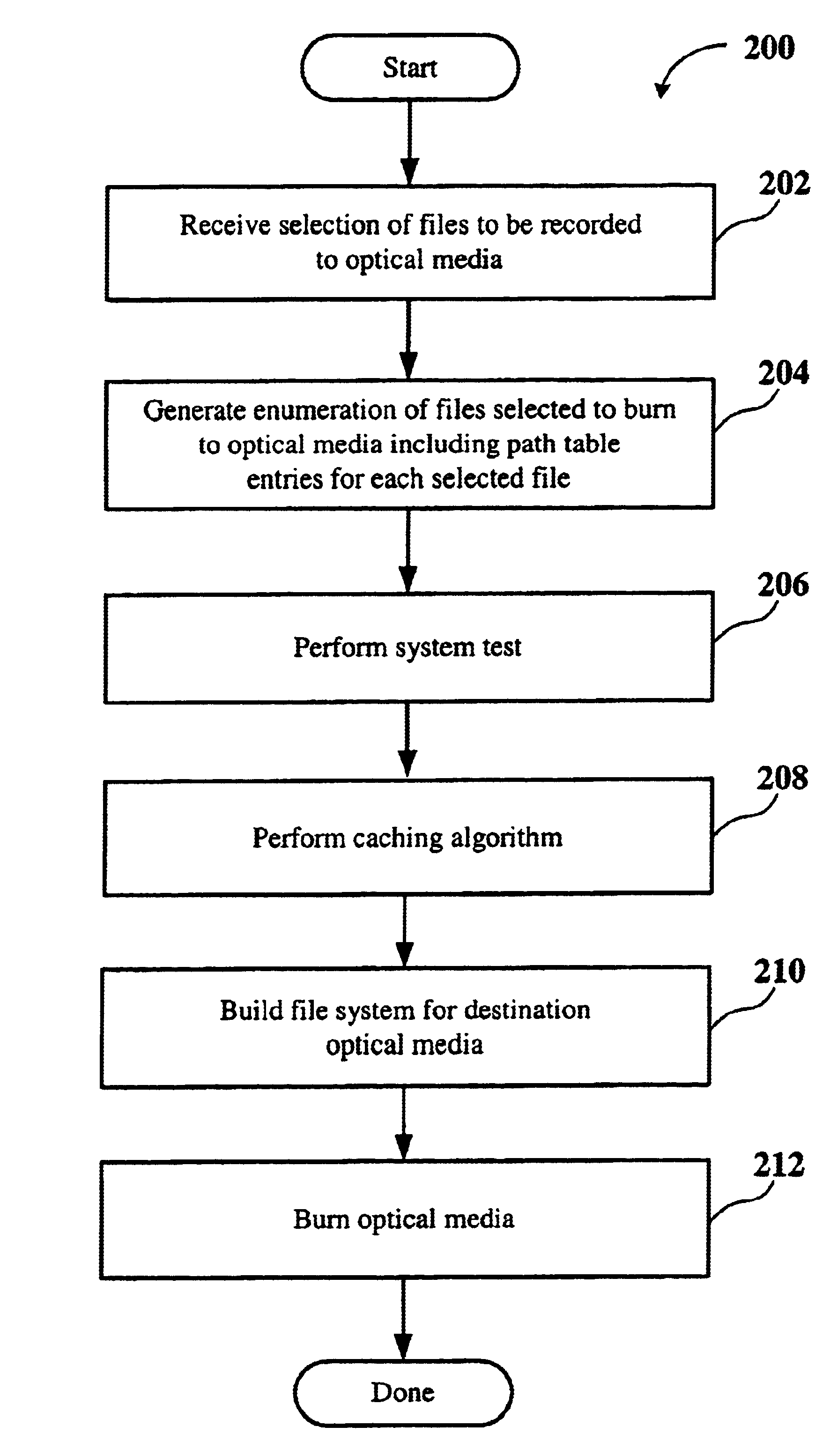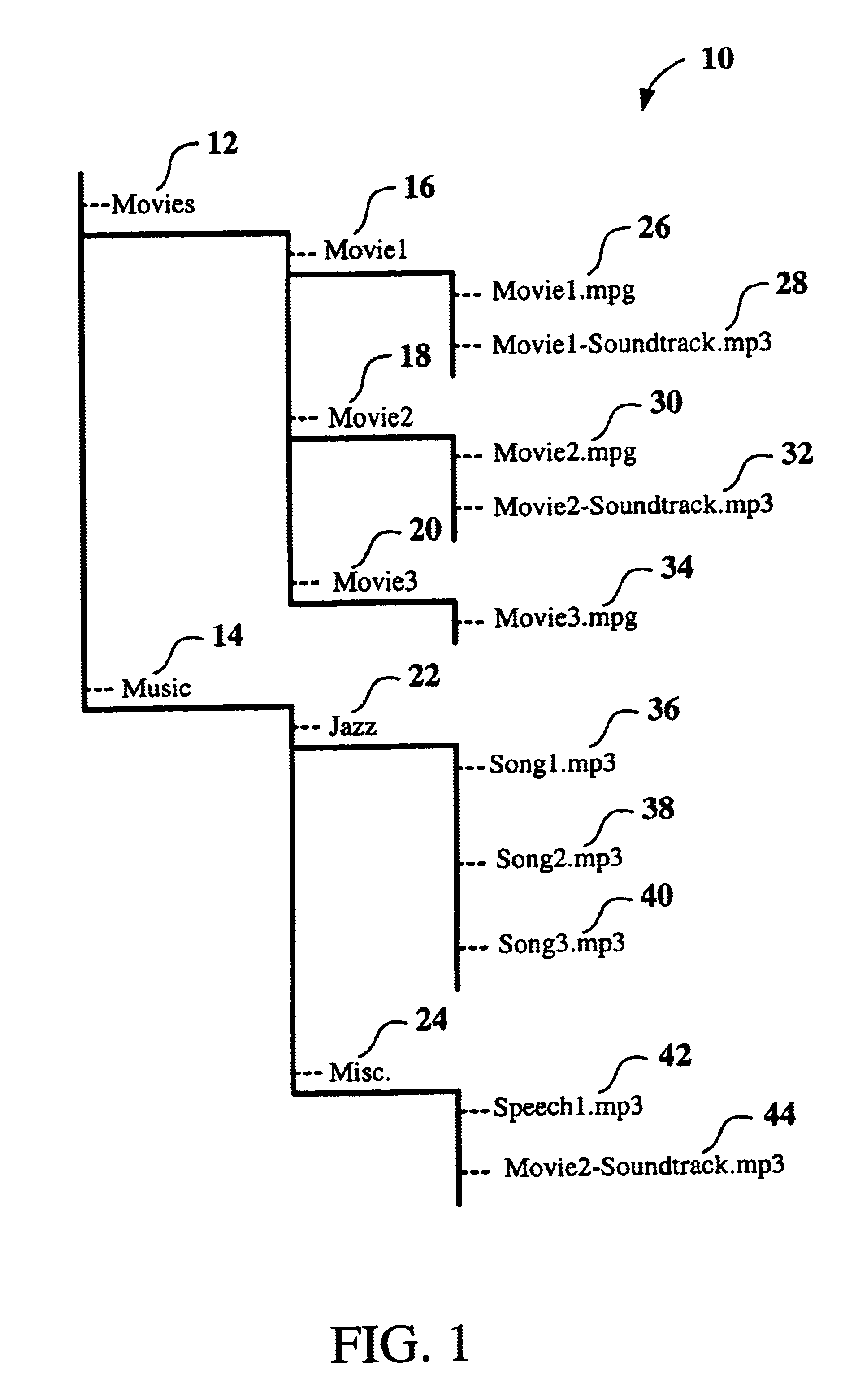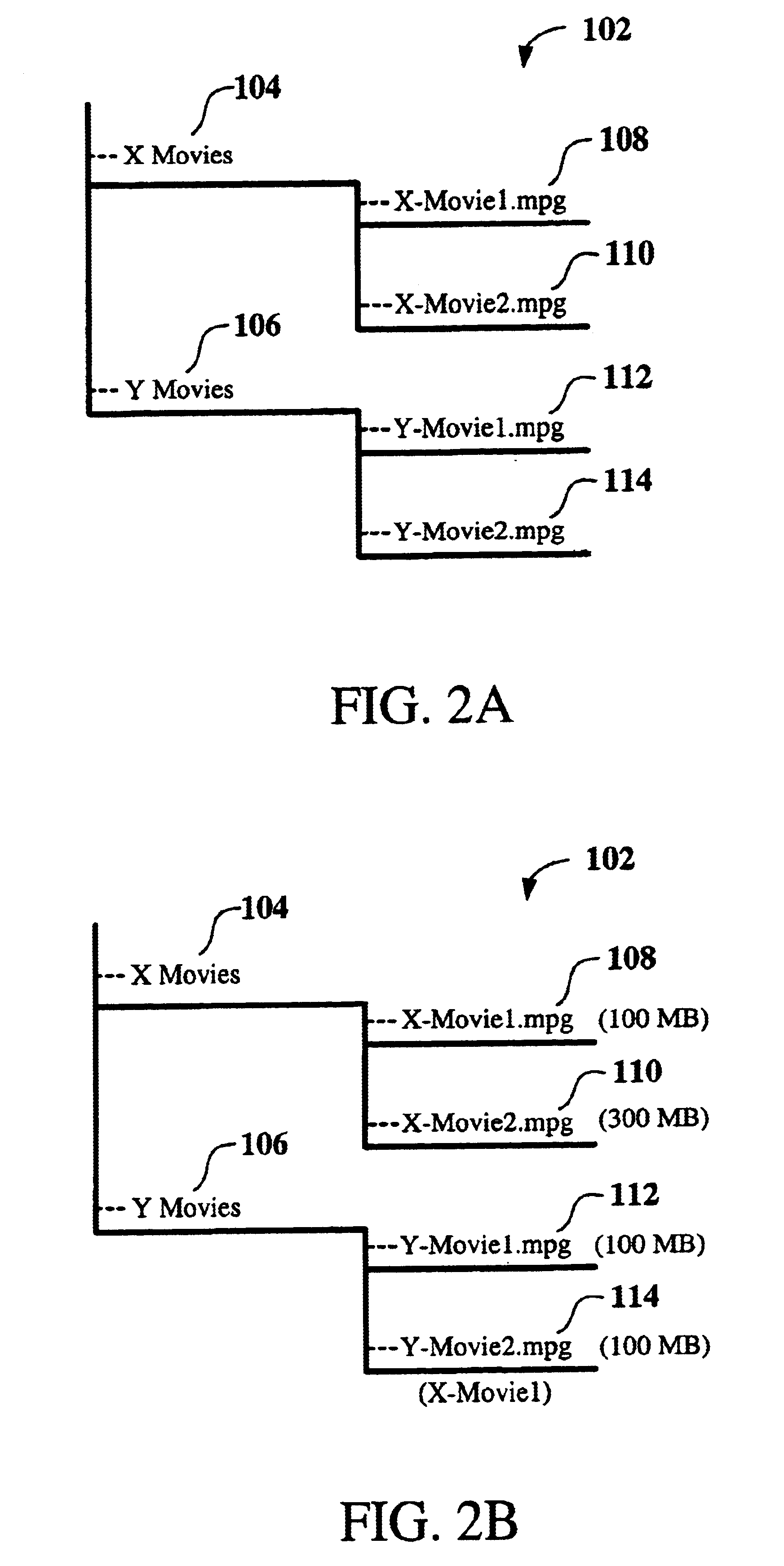Methods for recording data to optical media
a technology of optical media and data, applied in the direction of electronic editing, digital signal error detection/correction, digitalised analogue information signals, etc., can solve the problems of large files that can rapidly consume available media space, exhaust or seriously degrade recording resources, etc., to eliminate unnecessary duplication of recording processes, and the effect of efficient use of available recording resources
- Summary
- Abstract
- Description
- Claims
- Application Information
AI Technical Summary
Benefits of technology
Problems solved by technology
Method used
Image
Examples
Embodiment Construction
[0026]An invention for efficiently recording data to optical media is disclosed. In preferred embodiments, methods include providing for recording only a single instance of a source file to an optical media while providing for a plurality of links to the file from multiple structural or organizational locations on the optical media. In the following description, numerous specific details are set forth in order to provide a thorough understanding of the present invention. It will be understood, however, to one skilled in the art, that the present invention may be practiced without some or all of these specific details. In other instances, well known process operations have not been described in detail in order not to unnecessarily obscure the present invention.
[0027]Typically, when recording to optical media (e.g., CD-R / RW, DVD-R / RW, DVD+RW, etc.), one or more source files is selected for recording, and a burn or record request is executed. The selection of files can be accomplished ...
PUM
| Property | Measurement | Unit |
|---|---|---|
| time | aaaaa | aaaaa |
| write speeds | aaaaa | aaaaa |
| file size | aaaaa | aaaaa |
Abstract
Description
Claims
Application Information
 Login to View More
Login to View More - R&D
- Intellectual Property
- Life Sciences
- Materials
- Tech Scout
- Unparalleled Data Quality
- Higher Quality Content
- 60% Fewer Hallucinations
Browse by: Latest US Patents, China's latest patents, Technical Efficacy Thesaurus, Application Domain, Technology Topic, Popular Technical Reports.
© 2025 PatSnap. All rights reserved.Legal|Privacy policy|Modern Slavery Act Transparency Statement|Sitemap|About US| Contact US: help@patsnap.com



